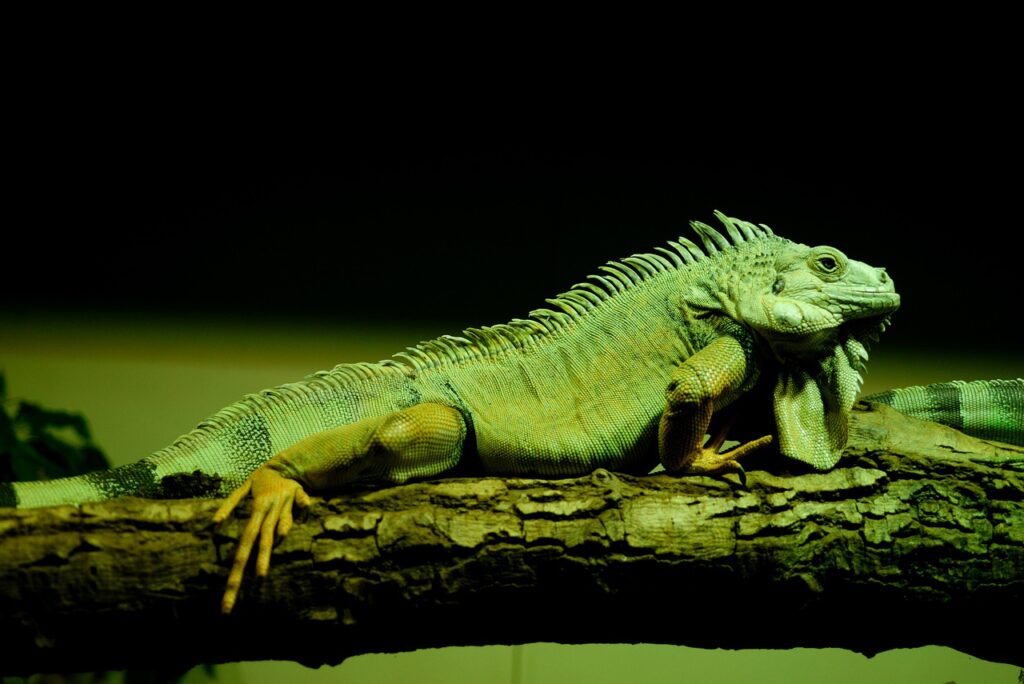Iguanas are fascinating creatures, especially when it comes to their sleeping habits. Iguanas sleep in trees to stay safe from predators and to take advantage of the warm sun. They often choose high branches where they can rest without worrying about threats on the ground.

These reptiles are most active during the day and spend their nights perched securely among tree branches. Their strong claws help them grip the branches firmly, preventing falls while they sleep. This behavior not only keeps them safe but also ensures they are ready to warm up quickly with the morning sun.
In some habitats, iguanas have been seen sleeping in rocky crevices or burrows as well. This flexibility in sleeping spots shows how adaptable they are to different environments.
Understanding Iguana Behavior and Environment

Iguanas have unique characteristics and a natural habitat that plays a crucial role in their behavior. They are primarily active during the day, and their routine includes specific daily patterns.
Iguana Characteristics and Natural Habitat
Iguanas are reptiles found mainly in the rainforests and tropical areas of South America. They often inhabit dense vegetation and prefer humid environments with plenty of sunlight. These creatures have strong limbs and sharp claws, ideal for climbing trees.
Their senses, especially eyes, are well-adapted to their environment. Iguanas rely on their keen eyesight to detect predators and find food. Some species can even see ultraviolet light. They have a third eye, known as the parietal eye, which helps sense light changes, aiding them in staying alert.
The natural habitat of iguanas is vital to their survival, providing necessary food and shelter. They feed on leaves, flowers, and fruits found in rainforests and coastal areas. Habitat loss and deforestation pose significant threats to iguana populations.
Daily Patterns and Activity Cycles
Iguanas are diurnal creatures, meaning they are active during the day. They follow a light-dark cycle, waking with the sunrise and becoming less active as the sun sets. Their daily routine includes basking in the sunlight, which helps regulate body temperature.
During the day, they search for food, using their sharp senses to locate leaves and fruits. Iguanas also spend time climbing trees, where they feel safer from ground predators. At night, they rest, often with one eye open to stay alert for danger.
Activity levels can vary based on the season and environmental conditions. In colder weather, iguanas become less active, while in warmer temperatures, their activity increases. This daily cycle ensures that iguanas get the necessary sunlight and food to stay healthy.
Iguanas in the Wild: Sleep Habits and Safety

In the wild, iguanas pick sleeping spots that help them stay safe from predators. They also choose locations that let them regulate their body temperature since they are cold-blooded.
Preferred Sleeping Conditions in Nature
Wild iguanas usually sleep in trees or on tree branches. These spots are high up, which helps them avoid ground-based predators.
The leaves and branches offer a good hiding place from creatures that might prey on them. They prefer to sleep where there is a balance of light and shade, as too much light can attract predators, while too little makes it hard to flee if needed.
The temperature plays a crucial role in their choice. Because iguanas are cold-blooded, they need their sleeping spots to help them conserve body heat during cooler nights. It’s common to find them in areas where the temperature remains relatively steady overnight.
Adaptations for Survival During Sleep
Iguanas are arboreal and choose places that offer safety. Their heart rate drops during sleep, conserving energy.
Their sleep cycle aligns with night time when they are less active. Being inactive at night helps them lower their risk of being spotted by predators. They often pick branches that can support their weight and offer them a quick escape route.
By sleeping in higher areas and being still, they lower the risk of attacks. Their ability to blend in with their environment further enhances their safety. All these habits and adaptations ensure they stay safe while they sleep.
Caring for Pet Iguanas: Ensuring Proper Rest
Pet iguanas need specific conditions for healthy sleep and well-being. Proper enclosure setup and sleep support play crucial roles.
Creating an Ideal Enclosure
Pet iguanas thrive in large, well-ventilated terrariums. The enclosure should be spacious enough for climbing and exploring. A 55-gallon tank is the minimum recommended size for a young iguana.
Lighting is crucial. Use full-spectrum bulbs that mimic natural sunlight. An artificial lighting schedule of 12 hours on and 12 hours off helps regulate sleep patterns. Heat lamps should provide a basking spot with temperatures between 95-100°F during the day and a drop to 75-85°F at night.
Make sure the terrarium includes hiding spots and branches for napping. A stressed iguana may have disturbed sleep behavior, so maintaining a calm environment is vital. Consistent temperature not only aids body heat regulation but also promotes restful sleep.
Sleep Support for Health and Well-being
To maintain a pet iguana’s healthy sleep, include soft bedding or foliage where it can comfortably rest. This mimics their natural sleeping habits in the wild.
Iguanas in captivity require a regular sleep schedule to reduce stress. A proper basking spot helps them absorb heat during the day, which is necessary for their digestion and overall well-being.
Captured iguanas often need guidance to develop good sleep routines. Limiting disturbances during sleep times boosts their health. Providing clean water and proper humidity levels ensures they stay hydrated, which can also improve their sleep quality.
By paying attention to these details, owners can help their iguanas lead a healthy, stress-free life in captivity.
